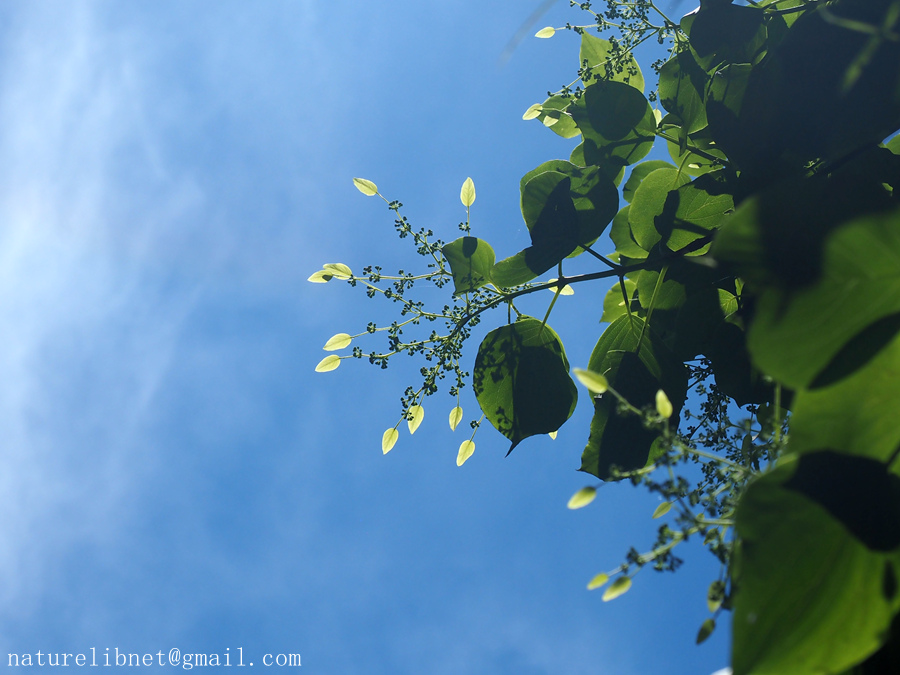- Scientific Name: Schizophragma integrifolium Oliver
- Ref: Hooker’s Icon. Pl. 20: t. 1934. 1890.
- Synonyms:
Schizophragma amplum Chun;
S. integrifolium var. denticutatum Rehder;
S. macrosepalum Hu.
- English Common Name: Chinese hydrangea vine
- Chinese Common Name: 钻地风 zuan di feng
- Family: Hydrangeaceae
- Genus: Schizophragma
- Distribution: Dense to sparse forests in valleys or on mountain slopes or summits; 200-2000 m. Anhui, Fujian, Guangdong, Guangxi, Guizhou, Hainan, Hubei, Hunan, Jiangsu, Jiangxi, Sichuan, Yunnan, Zhejiang.
- Type: Szechwan, Mt. Omei, near the summit, Rev. E. Faber; Dr. Henry (8951)
Shrubs scandent. Branchlets brown, glabrous. Petiole 2-9 cm, glabrous; leaf blade abaxially green or glaucous, adaxially glossy green, elliptic, narrowly so, or broadly ovate, 8-20 × 3.5-12.5 cm, thickly or thinly papery, abaxially glabrous or sometimes sparsely pubescent along veins or barbate at vein axils, adaxially glabrous, secondary veins 7-9 on both sides of midvein, base broadly cuneate, rounded, or shallowly cordate, margin entire or serrulate, apex acute to acuminate. Inflorescences corymbose, densely appressed brown pubescent, glabrescent. Sterile flowers with expanded sepal 1(-3), yellow-white, ovate-lanceolate, lanceolate, or broadly elliptic, 3-7 × 2-3 cm in fruit. Fertile flowers with calyx tube turbinate, 1.5-2 × 1-1.5 mm, base subacute; teeth triangular, ca. 0.5 mm. Petals narrowly ovate, 2-3 mm, apex obtuse. Stamens subequal, 4.5-6 mm at anthesis; anthers subglobose, ca. 0.5 mm. Style and stigma ca. 1 mm. Capsule campanulate to turbinate, 6-8 × 3.5-4.5 mm, base broadly cuneate, projected apical part shortly conical, ca. 1.5 mm. Seeds brown, compressed, 3-4 mm including wings; wings 1-1.5 mm. Fl. Jun-Jul, fr. Oct-Nov.(Flora of China)
